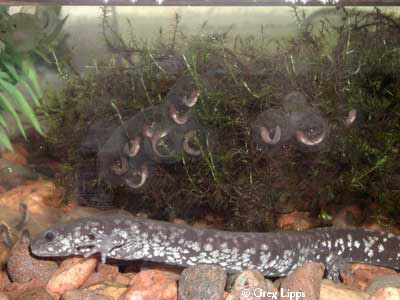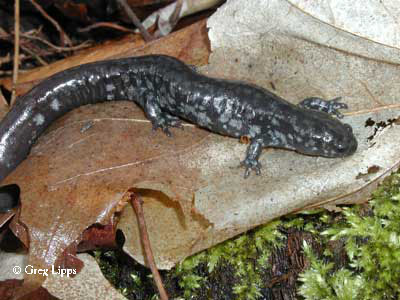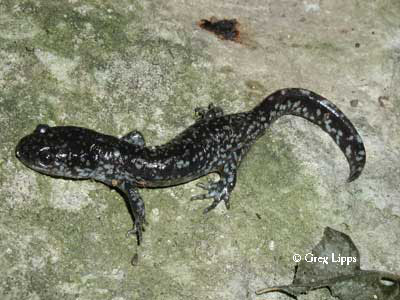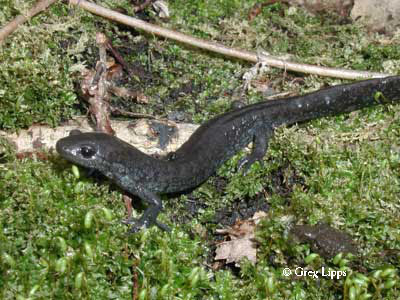
Unisexual Salamander Complexes
(Ambystoma spp.)
 |
 |
|
|
|
|
|
| Examples of some unisexual salamanders in Ohio from Henry County (top left and right), Kelleys Island (bottom left) and Wood County (bottom right). Unisexual salamanders can be diploid, triploid, tetraploid, or even pentaploid and may have "mixed" genotypes of the Blue-spotted Salamander, Small-mouth Salamander, Jeffson Salamander, and (less commonly) the Eastern Tiger Salamander. In the past some of these "mixes" were given names, including Tremblay's Salamander, Silvery Salamander, and Kelleys Island Salamander. These are no longer considered valid species, however. As the first unisexual Ambystoma discovered had genetic complements of the Jefferson Salamander, these forms are sometimes referred to as the "Ambystoma jeffersonianum complex." | ||
Description: Individuals of these complexes are extremely variable, having characteristics intermediate of two or more species (see caption above). Of the 20+ different genomic combinations so far identified, all but one (TTT) have contributions from the Blue-spotted Salamander; therefore, a degree of blue-flecking along the sides is almost always evident. All individuals of these complexes are female, except for a very small percentage (~1%) which appear to be sterile males. Interestingly, the mitochondrial (maternally-inherited) DNA is most similar to the Streamside Salamander (Ambystoma barbouri), not the parental species. |
||
Distribution in Ohio: Positively identified from the northern tier of counties along Lake Erie and in southwest Ohio, unisexual salamanders may be present throughout the state. |
||
|
|
||
Status in Ohio: Unisexual salamander complexes are the most common salamanders in many parts of northwestern Ohio. As the genetic makeup of populations is only beginning to be discerned, the status of the different lineages is unknown. |
||
|
|
||
Habitat: Breed in woodland vernal pools and spend the remainder of the year in the adjacent forests, hiding in burrows, and within and under rotting logs. |
||
|
|
||
Life history: Like other members of the genus, these salamanders migrate to vernal pools in the late winter or early spring, where they use the sperm from males of other species to fertilize their eggs. The male's sperm may simply stimulate unreduced eggs to develop, resulting in clones of the mother (similar to gynogenesis); replace an existing genome; or, increase the ploidy level (number of chromosomes) in the offspring. This mode of reproduction has been termed "kleptogenesis" (Bogart 2007), and results in unisexual offspring.. Little else is known about the specifics of their life history. |
||
|
|
||
Conservation: Populations are threatened by wetland filling and draining, the introduction of predaceous fish to breeding ponds, pollution, including herbicides and pesticides, and the loss of adult habitat. |
||
Last modified:
|
Ohio Amphibians · Ohio Salamander Web · Ohio Salamander Species · Amphibian Habitats · Salamander Monitoring |
|

